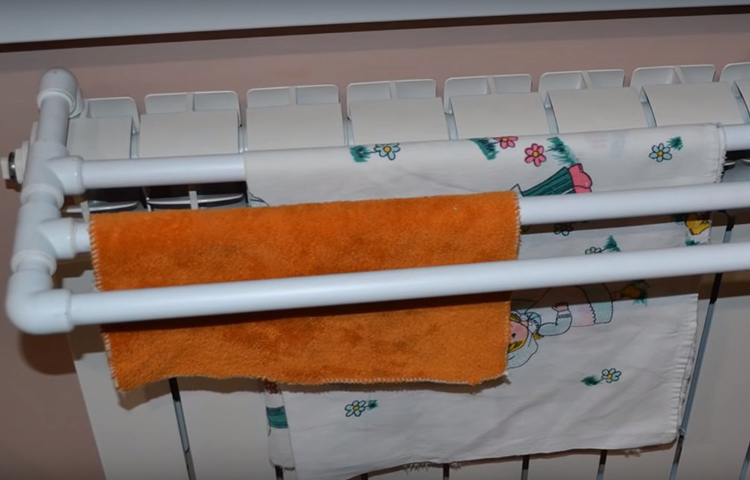If you are building your own house, after the erection of walls occurs not less important stage - conducting communications. One of the most important - heating system. It is a complex structure with many components. Each of the nodes of this system should be given due attention. In this figure - an expansion tank for heating. How to select it to install, as well as some features of tanks for different systems - all this is now in HouseShief.ru.

Read article
- 1 Why do we need an expansion tank
- 2 Types of expansion tanks and their features
- 3 Open-type heating systems and their expansion tanks
- 3.1 How to calculate the volume of the open tank
- 4 Tanks for closed heating system
- 4.1 Calculating tank volume for closed systems
- 5 Indoor or outdoor tank: Comparison
- 6 Reliable manufacturers expansion tanks
- 7 How to choose the expansion tank for heating
Why do we need an expansion tank
What is the working principle loop heating in home? AT tubes and battery on the perimeter of the building circulates heat transfer agentMost often it is water, it heats radiatorsWhich, in turn, give a warm room. If you went to school, you know that when heated fluid expands and contracts when cooled. And water in a closed heating system constantly changes its volume depending on the heating. At high temperatures, it can break the hermetic circuit, and while cooling, if there is a free access of air, an air pocket is formed.

So without expansion tank no heating system with the heat transfer fluid will not work. It does not matter that flows in your pipes: water or oil.
It remains only to find out: what kind of a copy of the numerous types of vessels choose to, as they say, put and forget.
Types of expansion tanks and their features
Tanks for heating systems can be open or closed. This is a fundamental difference, to which attention should be paid.

These tanks, most often, are rectangular in shape. They are made of steel. Another requirement is to open cisterns - impressive dimensions, which is why many do not like, as apparent. The device of such tanks is quite primitive. This is only lowered reservoir tube therein for removing fluid from the circuit. To a considerable extension when water is flowed through the vessel edge, equipped with its drain mechanism drains. In this tank you can visually control the amount of coolant in the system and top up if necessary.

This fact eliminates the possibility of air leaks in the circuit. In fact, it is a capsule with a membrane mechanism which separates the reservoir into the air and the liquid part. At receipt of excess fluid valve reduces the pressure due to venting. The entire structure is quite compact, looks neat and can be placed in any convenient place for you. In contrast to the open tank, in this version you do not feel any extraneous smells, not face rust and overflow. The use of sealed units will protect your radiators and boiler from corrosion. But the cost of these tanks is much higher.

Open-type heating systems and their expansion tanks
For open systems compensatory capacity is installed at the highest point circuit between boiler and the first battery. In this case, if all of a sudden water began to boil system, couples do not rush in radiatorsAnd will be released through the nipple. So you can avoid the entrapment of air.

It is important to calculate the volume of the tank, the hot water is not poured out of him over the edge.
Tip! To make it easier to maintain the tank, use a flexible hose to drain excess fluid.
How to calculate the volume of the open tank
Tank size is directly dependent on the amount of coolant and the temperature in the room. For example, for a circuit in which circulates 300 liters of water is required in tank 15 l. To calculate the amount of fluid you simply poured into the system, multiplied by five percent expansion. This is the most primitive calculation formulaWhich, however, it is well suited for simple heating systems.
There are also more correct, from an engineering point of view, the formula. It takes into account not only the amount of coolant, but also its maximum temperature. If you are in the water, the maximum temperature of heating it - 1000C °, and water in this heat expands only 2.4%. So, with the same volume of 300 liter 7.2 liter tank is sufficient.
Which calculation believe? The best option - to use the median. In our case (15 + 7.2) 2 = 11.1 liters.
Tanks for closed heating system
The closed-type circuit mounted diaphragm compensators red.
Note! Blue bins are not designed for heating system - a reservoir for water-supply communications. They are not designed for high temperatures.

At cooling diaphragm flexes in the opposite direction, and the air is sucked. The air and the liquid are not in contact in the reservoir. If there is a critical overheating coolant, Triggers an emergency valve that releases the excess fluid. Tanks may be removable or replaceable membrane was produced in the collapsible embodiment. Such expansion joints can be mounted on the ceiling, wall or simply set on the floor.

Calculating tank volume for closed systems
For closed tanks has its own formula for calculating:
Vb = VT. Kn / keff;
Where Vb - volume of the tank, VT - volume of heat carrier, kn - heating coefficient kef - efficiency factor of the tank.
With the volume of the coolant is more or less clear, as with the expansion coefficient during heating (2.4%). Calculate how many liters you have filled in is not difficult for a water meter.
And that's what the coefficient of efficiency of the tank? Roughly speaking, this performance indicator membrane. Without going into the complex calculations it can be said that the average efficiency of the heating systems in individual homes is 1.33.
Let's go back to our circuit, which is filled to 300 liters of water. The volume of the closed type tank will be Vb = 300. 2.4: 5.4 = 1.33 liters. Experts advise in this case to provide a small margin for safety. So the seven-liter tank, you will be quite enough.
Indoor or outdoor tank: Comparison
So, the main difference between the open and closed container in the presence or absence of contact with the air. So does it matter?
On the one hand, a simple open compensator - cost-effective solution for the heating system, which fully meets all the necessary requirements.

In a sealed coolant circuit does not evaporate, it is a fact. Hence, the need for its periodic refilling not, which means you do not spend too much time on it. The second obvious advantage over conventional membrane design capacity - the freedom in choosing the location for installation. Compact, neat and inconspicuous, it will not attract too much attention.
In the open tank water is aerated, and a tandem leads to the formation of rust on the insides of pipes and batteries.

Remember to follow the open tank: constantly check the level of liquid in it, so as not to miss the moment when the tube begins to suck in the air circuit. A closed tank does not require attention. You can of course use different know-how of the craftsmen: flags and floats. If you will develop the habit of constantly glancing in the direction of the tank, it is possible that self-made alarm to warn you of the urgent problems.
Finally, closed tanks can be used for all heating systems, including - for water sexes.

Reliable manufacturers expansion tanks
By selecting a membrane compensator, pay attention to the product manufacturer. You will not be able to visually assess the quality of the closed design, so it will have to rely on the experience of other buyers.
First of all, do not risk, buying such devices from little-known manufacturers, especially Chinese origin. It is not necessary to purchase the product and in the secondary market.

And now the brand, which, in the opinion of specialists in heating, to be trusted:
- AQUASYSTEM - Italian quality products has earned high praise from professionals and practitioners;
- ELBI - another Italian manufacturer, offering tanks with fixed membrane high reliability;
- REFLEX - products from Germany have replaceable membrane.
In addition to these, look at the expansion joints of VAREM, ZILMET and WESTER.
How to choose the expansion tank for heating
Consider buying compensator stands still on the heating system design stage. The dimensions of the tank must be chosen based on the volume of coolant. Do not forget to measure the volume of water by meter reading or mathematical way. Get the tanks a little more volume than recommended in the calculation. This does not affect circuit performance, and you will be calmer.
At the end of a small article about the nuances of the selection of the compensator:
And what is the expansion tank you use in your house? Share your experiences about its effectiveness in the comments!



